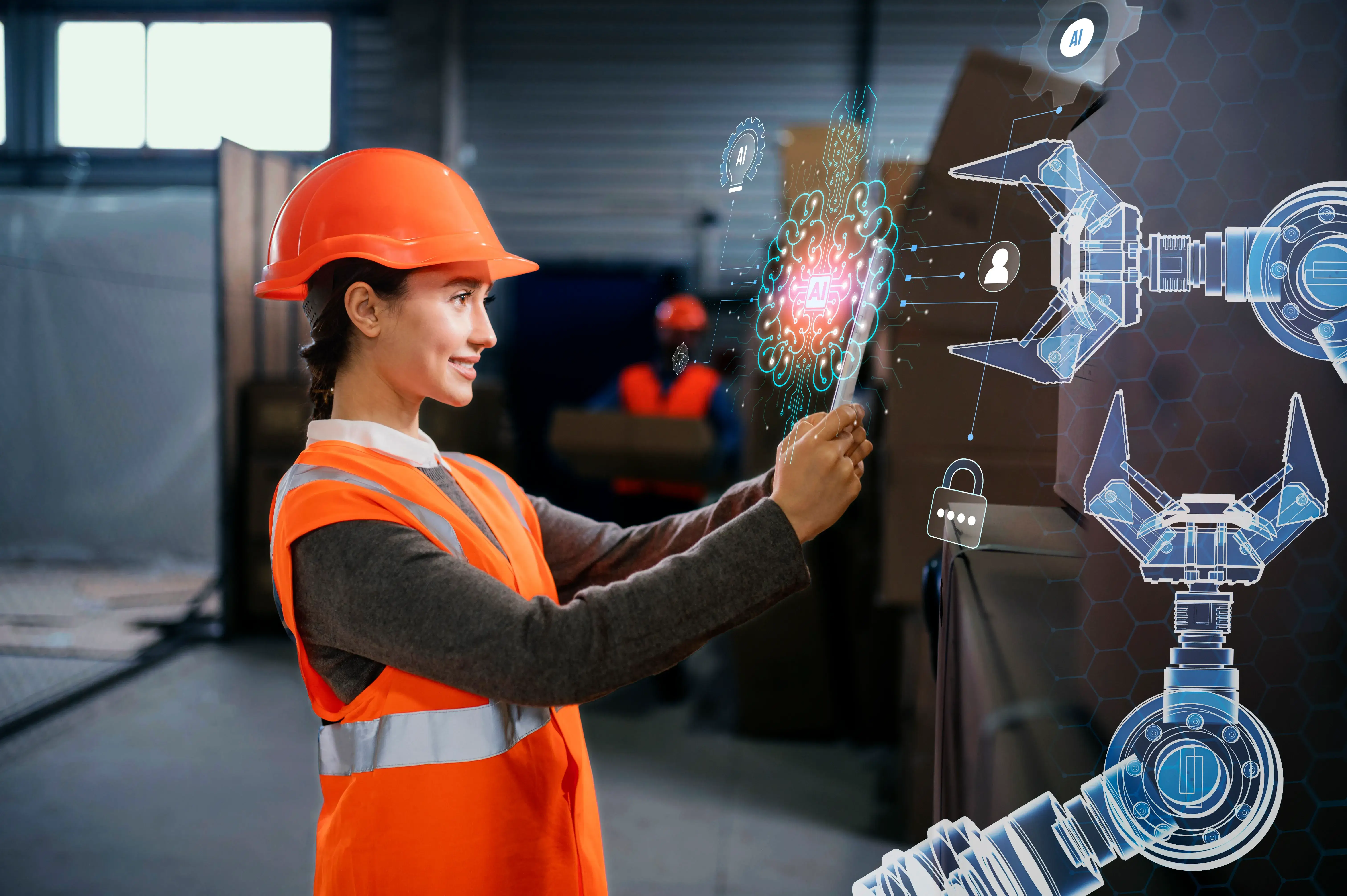

Artificial Intelligence (AI) significantly enhances occupational health and safety (OHS) by enabling real-time monitoring, predicting hazards, and automating compliance. Through AI-enabled workplace safety tools—like wearable devices and computer vision—organizations detect risks faster, ensure employee safety, and reduce human error.
AI in HSE also supports decision-making by analyzing historical incident data, offering predictive insights for preventive actions. As AI in occupational health advances, it transforms health and safety services into proactive, intelligent systems that protect both workers and businesses.
AI-based safety solutions harness advanced AI technologies like machine learning, computer vision, and natural language processing (NLP) to process both structured and unstructured data, enabling accurate risk detection and prevention The Internet of Things (IoT) and smart building systems provide real-time environmental insights, enhancing automation and proactive responses Additionally, robotics automate hazardous tasks, reducing human exposure (Algi AI).
Emerging generative AI models improve scenario simulation and decision-making, while frameworks for responsible AI ensure ethical and transparent deployment across industries
AI utilizes predictive analytics and historical data analysis to uncover risk patterns, enabling early identification of potential hazards. Through real-time monitoring and continuous monitoring of workplace conditions, AI-powered systems perform anomaly detection and hazard detection, providing instant alerts to prevent incidents Additionally, predictive maintenance forecasts equipment failures before breakdowns occur, minimizing downtime and accidents . These data insights integrate into decision support systems that guide proactive safety interventions, significantly reducing workplace risks.
AI safety monitoring employs wearable devices and sensors embedded in smart PPE such as smart helmets, smart gloves, and smart respirators to track vital signs and environmental conditions in real time. These devices monitor factors like temperature, air quality, gas detection, and noise levels to ensure worker safety.Additionally, AI systems can track waste disposal processes to maintain compliance and reduce hazards, leveraging continuous data streams for timely alerts and intervention
Implementing AI in safety raises critical ethical concerns such as data privacy and algorithmic fairness, demanding transparency and mitigation of bias in algorithms
Ensuring human oversight through a human-in-the-loop approach maintains accountability and trust. Compliance with evolving regulations like GDPR and HIPAA, alongside thorough auditing procedures and regulatory oversight, is essential to address legal liability and define clear accountability frameworks. Incorporating indemnification clauses helps manage risks tied to AI decision-making in safety-critical environments
AI enhances training and awareness by creating personalized learning experiences that adapt to individual needs, increasing engagement and retention Through incident reporting automation, AI quickly processes accident reports and near-miss incidents, enabling timely analysis and feedback.
This supports continuous improvement of safety guidelines and helps organizations proactively address risks. AI-powered simulations and real-time insights make safety programs more effective and responsive.
AI improves risk assessment and risk management by analyzing vast data to identify vulnerabilities and mitigate risks before they escalate Advanced algorithms continuously monitor systems to detect anomalies, enhancing both physical safety and cybersecurity. By automating compliance checks, AI ensures organizations meet regulatory requirements consistently, reducing human error and strengthening overall safety governance

This website stores data such as cookies to enable site functionality including analytics and personalization. By using this website, you automatically accept that we use cookies.